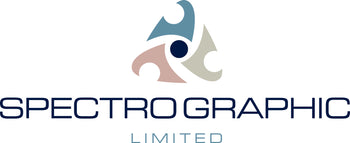SHELLEY CRESWICK
31/10/2024
Weld Inspection
METALLOGRAPHIC PREPARATION

Weld Inspection preparation
Cutting Machine
A good cutter is crucial in weld sectioning as it ensures precise, clean, and consistent cuts through welded joints for accurate inspection and analysis. Weld sectioning involves cutting a sample from a welded component to inspect its internal quality, such as fusion, penetration, porosity, and inclusion.
A good cutter is indispensable in weld sectioning as it preserves the integrity of the weld sample, supports accurate testing, and aligns with safety and quality standards, ultimately contributing to a reliable assessment of weld quality. Use our MS wheels for a perfect cut.


Grinder/Polisher
A
Use our silcon grinding papers, P180, P320, P600 and P1200 grit, with 6 and 1 micron diamond suspension. For polishing our ORLI or IRIS cloths

Etching is essential in weld inspection because it reveals the microstructural details of a weld that are not visible on a polished, unetched surface. By using chemical solutions to selectively corrode specific areas of a metal sample, etching highlights features like grain boundaries, phases, and heat-affected zones (HAZ), which are critical for evaluating weld quality, performance, and reliability. Preparation for Microscopy: Etched samples provide clearer and more detailed views under optical and electron microscopes, allowing for an in-depth analysis of the weld’s internal structure.Improving Image Contrast: Etching enhances the contrast of structural features, making it easier to capture high-resolution images for digital analysis and archival purposes. etching is a key step in weld inspection because it reveals hidden microstructural details, enabling a comprehensive assessment of weld quality, performance, and compliance with standards. It plays a critical role in understanding the metallurgical characteristics that determine the weld’s reliability and suitability for its intended application.
A common etchant for low carbon and plain-carbon steels. Nital 2-5% in ethanol 100ml can be used for micro-etching mild steel, carbon steel, low alloy steel, cast iron, and some tool steel.
Click here for our full range of etchants

Microscopes
Selecting the best microscope for weld inspection depends on the inspection requirements, the level of detail needed, and the specific materials involved. Weld inspections often require microscopes offering upto a 1000x magnification, clarity, and adaptability for analysing both surface and subsurface characteristics. Here are some of the best types of microscopes for weld inspection, along with specific recommendations:
1. Stereo Microscopes Purpose: Ideal for initial visual inspection and low-magnification observation.Benefits: Provides a 3D view of the weld, making it easier to identify surface defects, cracks, and porosity.
Top Choice: Olympus SZX7 – This microscope offers a zoom magnification range suitable for examining surface-level details in welds. It has high-quality optics and ergonomic design, making it comfortable for extended use.
2. Digital MicroscopesPurpose: Enables digital imaging, measurement, and analysis.Benefits: Offers live image display, easy sharing, and advanced measurement tools for accurate defect analysis and documentation.
Top Choice:

• All dimensional measurements.
• Programmable (Automatic) measurement
• Supports all weld quality parameters like depth/penetration, %penetration, leg
lengths, throat lengths, root penetration etc.
• Can define Component and its parameters to be measured
• Can measure length, area, angle, diameter, radius, circumference in addition to
weld penetration measurement
• Can set expected values and tolerances for each parameter
• Automatic edge detection
